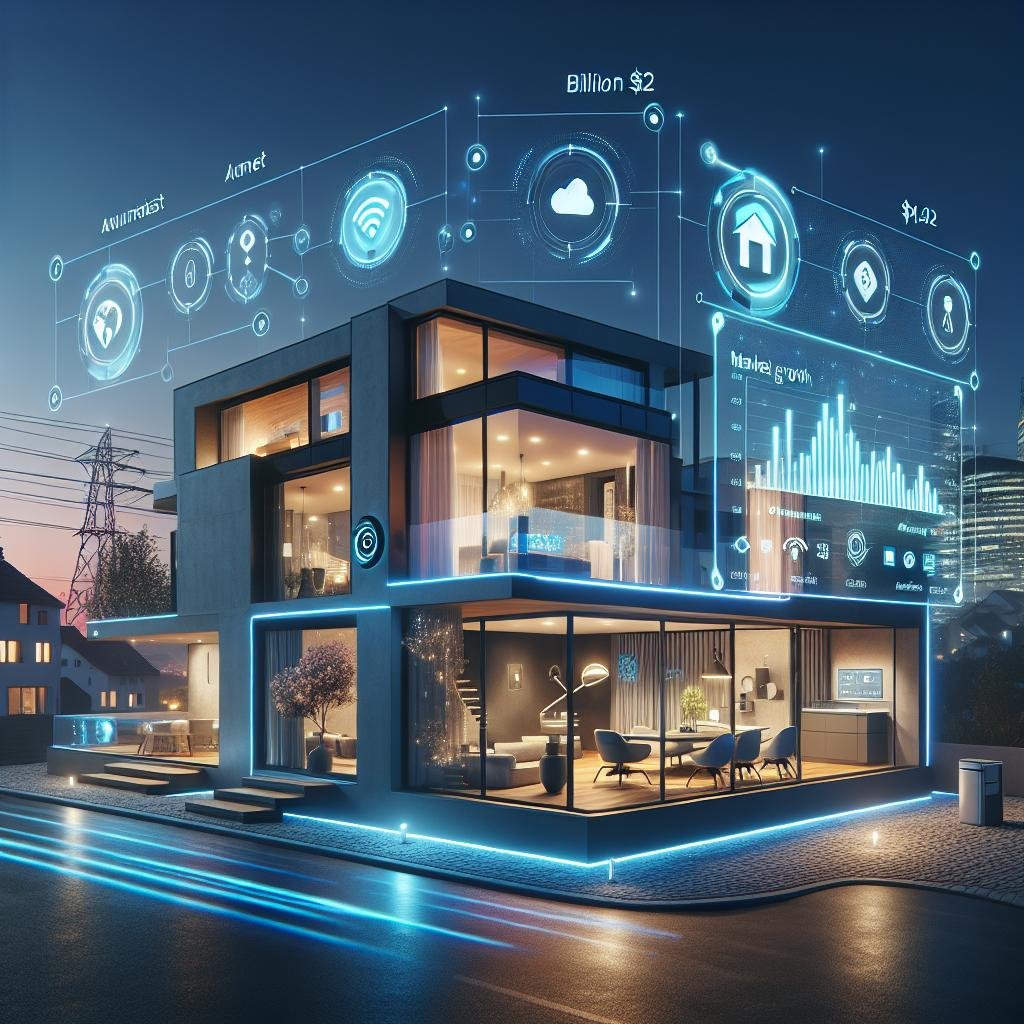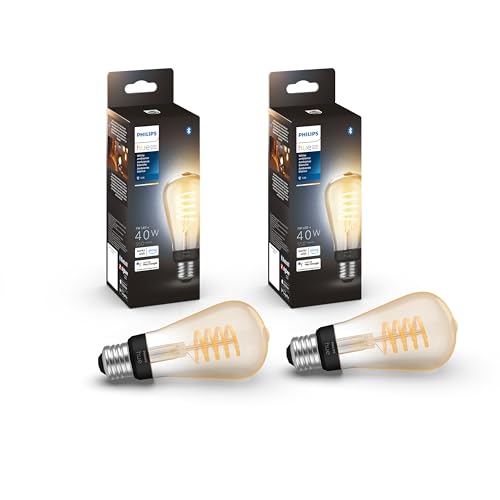
Introduction: Europe’s Smart Home Boom
The smart home revolution is sweeping across Europe, transforming everyday living with cutting-edge technology. Homeowners are adopting connected devices at an unprecedented rate, integrating security systems, smart lighting, and energy-efficient appliances to create intelligent, automated homes.
By 2029, the European smart home market is expected to soar to $49.9 billion, reflecting a massive shift in consumer preferences and technological advancements. If you’re a smart home enthusiast or considering upgrading your home, now is the perfect time to explore the growing opportunities in this thriving industry.
- Live Steam from Anywhere with Pan/Tilt: Sharp and clear 1080p Full HD provides high quality video right in the palm of y…
- Real-Time Motion/Sound Detection: Get alerts on your smart phone whenever motion or sound is detected even at night (30f…
- Smart Actions: As one of the most user-friendly security cameras, EC70 provides you a way to set your lights to turn on …
Key Drivers of Growth in Europe’s Smart Home Market
1. Increasing Demand for Home Security and Automation
Security remains a top priority among smart home users. With rising concerns about home safety, homeowners are turning to:
- Smart security cameras – Offering real-time monitoring and motion alerts.
- Video doorbells – Allowing homeowners to see and talk to visitors from anywhere.
- AI-powered alarms – Instantly detecting unusual activity and notifying homeowners.
These devices not only enhance security but also provide seamless automation, enabling homeowners to control their homes remotely through voice assistants or smartphone apps.
2. Rapid Growth of Energy Management Systems
Sustainability is a major driving force behind smart home adoption. People are looking for ways to reduce energy consumption and lower their electricity bills. Smart home solutions that support energy efficiency include:
- Smart thermostats – Learning user preferences and adjusting temperatures automatically to optimize energy use.
- Energy-monitoring smart plugs – Tracking power usage and shutting off idle devices to prevent waste.
- Solar-integrated smart systems – Helping homeowners make the most of renewable energy sources.
As energy prices fluctuate across Europe, smart energy management will become an essential part of daily home automation.
3. Rise of AI and IoT-Enabled Smart Home Devices
The integration of Artificial Intelligence (AI) and the Internet of Things (IoT) is making homes smarter. Devices like Amazon Alexa, Google Nest, and Apple HomeKit create connected ecosystems where different devices work together for a seamless user experience.
Key benefits of AI and IoT in smart homes include:
- Personalized automation – Devices learn user habits and adjust settings accordingly.
- Voice-controlled convenience – Homeowners can control everything hands-free.
- Predictive maintenance – Smart devices can detect problems before they occur, preventing costly repairs.
As these systems become more advanced, smart homes will feel increasingly intuitive and user-friendly.
- WHAT’S IN THE BOX – Includes two White Ambiance smart 40W-equivalent ST19 warm-to-cool white filament bulbs; Look great …
- UNLOCK THE FULL POWER OF HUE – Add a Hue Bridge to enjoy automations, control from anywhere in the world, and a secure, …
- SHADES OF WHITE – Choose from shades of warm-to-cool white light to enhance your room decor and ambiance; Cool white lig…
Challenges Impacting the European Smart Home Market
1. Data Security and Privacy Concerns
With the rise of internet-connected devices, cybersecurity remains a critical concern. Consumers worry about data privacy, hacking risks, and unauthorized access to their personal information. To address these challenges, manufacturers are focusing on:
- End-to-end encryption – Ensuring only authorized users can access device data.
- Regular firmware updates – Protecting smart devices from security vulnerabilities.
- Stronger user authentication – Using biometric recognition and multi-factor authentication.
As smart technology evolves, improved security protocols will help build consumer trust.
2. High Initial Costs and Compatibility Issues
While smart home technology offers long-term savings and convenience, the initial investment can be high. Some homeowners hesitate due to:
- The cost of top-tier smart devices and installation.
- Compatibility concerns when integrating different brands and systems.
- A learning curve for setting up and managing smart home automation.
However, with increasing competition and technological advancements, costs are expected to decrease, making smart home solutions more accessible.
- 𝐀𝐈𝐑 𝐏𝐔𝐑𝐈𝐅𝐈𝐄𝐑 𝐃𝐄𝐒𝐈𝐆𝐍𝐄𝐃 𝐅𝐎𝐑 𝐀𝐋𝐋𝐄𝐑𝐆𝐘 𝐆𝐑𝐎𝐔𝐏𝐒:The Vital 200S-P is designed specifically for allergy groups, effectively preve…
- 𝐇𝐈𝐆𝐇𝐄𝐑 𝐀𝐈𝐑 𝐈𝐍𝐓𝐀𝐊𝐄: Purify your air quickly. With a traditional air inlet and the additional U-shaped air inlet, airborne…
- 𝐋𝐀𝐑𝐆𝐄 𝐂𝐎𝐕𝐄𝐑𝐀𝐆𝐄: The Vital 200S-P is perfect for large, indoor spaces, especially large bedrooms. It has a CADR of 242 CF…
Future Trends to Watch in the Smart Home Market
1. Smart Home Integration with Renewable Energy
As Europe accelerates its green energy transition, future smart homes will integrate better with solar panels, battery storage, and electric vehicle charging stations. Home automation systems will optimize energy use, ensuring homeowners maximize savings while reducing their carbon footprint.
2. Advanced AI Assistants and Home Robotics
The rise of AI-driven assistants and home robotics will redefine how people interact with their homes. Expect to see:
- More intuitive voice commands for controlling smart home devices.
- AI-powered home cleaning robots that map rooms and clean efficiently.
- Smart kitchen automation, helping users cook with guided instructions.
3. 5G-Powered Smart Homes
The adoption of 5G technology will enhance smart home performance by providing faster, more reliable connectivity. This will improve:
- Real-time automation for lighting, security cameras, and home appliances.
- Ultra-fast streaming on smart entertainment systems.
- Better responsiveness for remote-controlled home functions.
Conclusion: Is Your Home Ready for the Future?
With Europe’s smart home market on track to reach $49.9 billion by 2029, there has never been a better time to invest in smart technology. Whether you’re interested in home security, energy efficiency, or AI-powered automation, the future is full of exciting opportunities.
Want to get started? Check out our latest smart home device recommendations and explore guides on how to build your own connected home. The future of living is here—embrace it today!


